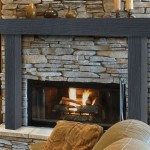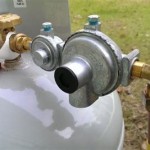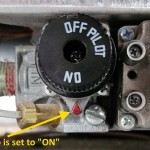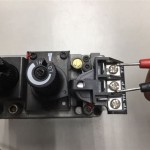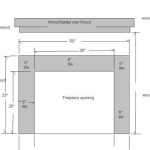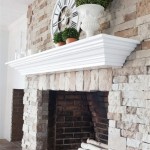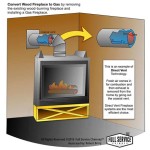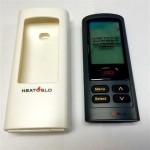Screens For Fireplaces: Functionality, Safety, and Style
Fireplace screens represent a vital component of fireplace functionality, serving multiple purposes that contribute to safety, aesthetics, and efficient fireplace operation. They are available in a wide variety of styles, materials, and sizes, catering to diverse homeowner preferences and fireplace specifications. Understanding the role and selection criteria for fireplace screens is essential for responsible fireplace ownership.
The primary function of a fireplace screen is to prevent embers, sparks, and hot debris from escaping the firebox and potentially causing damage or injury to the surrounding environment. An open fireplace can eject burning material with surprising force, leading to scorched carpets, furniture damage, and, in the worst-case scenario, a house fire. A properly installed and maintained fireplace screen acts as a barrier, containing these potentially hazardous projectiles and mitigating the risk of accidents.
Beyond safety, fireplace screens also contribute to the overall aesthetics of a living space. They serve as a decorative element, capable of complementing the existing décor and adding visual interest to the fireplace area. Screens can be selected to match a specific design style, from traditional wrought iron to modern minimalist designs, enhancing the visual appeal of the fireplace, whether it is in use or not.
Furthermore, some fireplace screens can influence the efficiency of the fireplace. While not their primary purpose, certain screen designs, particularly those with finer mesh, can partially regulate airflow, which can impact the burning rate of the fire. This aspect is less pronounced than factors such as damper settings or wood type, but it represents a secondary benefit in some circumstances.
Safety Considerations: Preventing Embers and Sparks
The core function of a fireplace screen lies in its ability to act as a protective shield against errant embers and sparks. The design and construction of the screen directly impact its effectiveness in this regard. The mesh size is a critical factor; smaller mesh openings offer superior protection against even small, glowing embers, while larger mesh may allow some smaller particles to pass through. The material's heat resistance is also paramount, ensuring that the screen does not warp, melt, or otherwise degrade under the intense heat of a burning fire.
The screen must completely cover the fireplace opening. Any gaps or openings around the screen's edges can compromise its protective capabilities. A correctly sized screen will extend slightly beyond the firebox opening on all sides, providing a secure barrier. The screen's stability is also important; it should be sturdy enough to withstand accidental bumps or contact without tipping over or collapsing.
Regular inspection and maintenance are crucial for ensuring the continued effectiveness of the screen. Check for any signs of damage, such as holes, tears, or warping. Damaged screens should be repaired or replaced immediately. Soot and creosote buildup on the screen can also diminish its effectiveness and increase the risk of fire. Periodic cleaning with a wire brush and appropriate cleaning solutions is recommended to maintain the screen's integrity.
The type of fuel used in the fireplace can also affect the frequency and intensity of ember and spark emission. Certain types of wood, particularly those that are not fully seasoned, are more likely to produce excessive amounts of sparks. Using seasoned wood and adhering to safe burning practices can help minimize the risk, but a properly functioning fireplace screen remains an indispensable safety measure.
Aesthetic Considerations: Design and Style Choices
Beyond their functional purpose, fireplace screens offer an opportunity to enhance the aesthetic appeal of the fireplace and the surrounding space. The available design options are extensive, ranging from simple, utilitarian screens to elaborate, decorative pieces. The choice of screen should complement the overall design style of the room and reflect the homeowner's personal taste.
Material selection plays a significant role in the screen's aesthetic impact. Wrought iron screens are a classic choice, often featuring intricate designs and a timeless appeal. Brass screens offer a touch of elegance and sophistication, while stainless steel screens provide a modern, minimalist aesthetic. The finish of the screen, such as brushed nickel, antique bronze, or matte black, can further enhance its visual appeal.
The style of the screen should align with the architectural style of the home and the existing décor. Traditional homes often benefit from ornate, decorative screens with scrollwork or other embellishments. Modern homes may be better suited to simpler, more streamlined screens with clean lines and minimal ornamentation. Consider the color palette of the room and choose a screen that complements the existing colors and textures.
The size and shape of the screen should also be proportionate to the fireplace opening. A screen that is too small will look out of place and may not provide adequate protection. A screen that is too large can overwhelm the fireplace and detract from its visual appeal. Measure the fireplace opening carefully and choose a screen that fits comfortably while maintaining a balanced aesthetic.
Some screens also incorporate decorative elements such as glass panels, ceramic tiles, or metallic accents. These features can add visual interest and personality to the screen, making it a focal point in the room. However, it is important to ensure that any decorative elements do not compromise the screen's primary function of preventing embers and sparks from escaping.
Types and Features: Selecting the Right Screen for Your Fireplace
The market offers various types of fireplace screens, each possessing distinct features and benefits. Understanding these differences is crucial for making an informed selection that meets individual needs and fireplace specifications. The most common types include flat screens, single-panel screens, multi-panel screens, and freestanding screens.
Flat Screens:
These are the simplest and most affordable type of fireplace screen. They consist of a single panel of mesh framed with metal. Flat screens are easy to install and maintain, offering basic protection against embers and sparks. However, they may not be as visually appealing as other types of screens.Single-Panel Screens:
Similar to flat screens, single-panel screens often incorporate more decorative elements and sturdier construction. They typically feature a metal frame with a mesh insert and may include decorative accents such as scrollwork or geometric patterns. Single-panel screens provide a balance of functionality and aesthetics.Multi-Panel Screens:
These screens consist of two or more panels that are hinged together. Multi-panel screens offer greater flexibility in terms of positioning and adjustability. They can be adjusted to fit a variety of fireplace openings and can be easily folded for storage when not in use. Multi-panel screens are a popular choice for their versatility and aesthetic appeal.Freestanding Screens:
Unlike the other types, freestanding screens do not require any mounting or attachment to the fireplace. They stand independently on their own feet, making them a convenient option for fireplaces that cannot accommodate a traditional screen. Freestanding screens are available in a variety of styles and materials and can be easily moved or repositioned as needed.In addition to the basic types, some screens incorporate additional features such as doors or gates. These features allow for easy access to the firebox for adding wood or tending to the fire without having to remove the entire screen. Screens with doors or gates can be particularly convenient for fireplaces that are frequently used.
The frame is typically constructed from metal, with wrought iron, steel, and brass being common choices. Wrought iron offers durability and a classic aesthetic, while steel provides strength and affordability. Brass offers a touch of elegance and sophistication. The mesh material is usually made of steel wire or a similar heat-resistant material. The mesh size is a critical factor in determining the screen's effectiveness in preventing embers and sparks from escaping.
Measuring for a Fireplace Screen
Accurate measurement is paramount when selecting a fireplace screen. A screen that is too small will not provide adequate protection, while a screen that is too large may not fit properly and can look awkward. Following a systematic approach to measuring the fireplace opening ensures a proper fit and optimal functionality.
Begin by measuring the width of the fireplace opening at its widest point. Use a tape measure and record the measurement in inches. Repeat the measurement at the top, middle, and bottom of the opening to account for any variations in width. Use the largest width measurement as the basis for selecting the screen width.
Next, measure the height of the fireplace opening at its tallest point. Again, use a tape measure and record the measurement in inches. Repeat the measurement on both sides of the opening to account for any variations in height. Use the largest height measurement as the basis for selecting the screen height.
In general, the fireplace screen should be slightly wider and taller than the fireplace opening. This ensures that the screen completely covers the opening and prevents any embers or sparks from escaping. A good rule of thumb is to add at least 2-6 inches to both the width and height measurements to allow for adequate coverage.
Consider the depth of the fireplace hearth when selecting a freestanding screen. The base of the screen should be deep enough to provide adequate support and stability. Measure the depth of the hearth and choose a screen with a base that is at least as deep as the hearth.
When selecting a multi-panel screen, ensure that the combined width of the panels is sufficient to cover the fireplace opening. The panels should overlap slightly to prevent any gaps or openings. Measure the width of each panel and add them together to determine the total width of the screen.
Take careful measurements and double-check them before purchasing a fireplace screen. Accurate measurements ensure a proper fit and optimal functionality, providing peace of mind and enhancing the safety and beauty of the fireplace.

5 Favorites Simple Fire Screens Remodelista

Chesneys Usa Are Fireplace Screens Necessary

Best Fireplace Screens Top 6 Reviews Comparisons

Bowed Fireplace Screen Rejuvenation

Ping For Fire Screens The New York Times

Ledge Glass Fireplace Screen Reviews Cb2

View All Fireplace Screens Pilgrim Home Hearth

Antiqued Brass Fireplace Screen Reviews Crate Barrel

Matte Black Recessed Fireplace Screen With Valance For Masonry Fireplaces

12 Best Freestanding Fireplace Screens 2024
Related Posts

